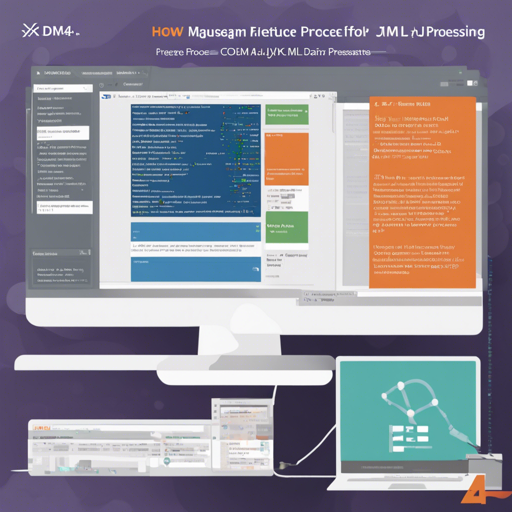Welcome to our user-friendly guide on processing XML with dom4j, an open-source framework that integrates smoothly with XPath and is fully compatible with DOM, SAX, JAXP, and the Java platform. Whether you’re building a small application or tackling a more advanced project, dom4j has got you covered.
Getting Started with dom4j
To use dom4j in your Java project, follow these steps:
- Step 1: Ensure you have Java installed on your machine.
- Step 2: Add the dom4j library to your project’s dependencies. You can get it from Maven Central using the following dependency:
<dependency>
<groupId>org.dom4j</groupId>
<artifactId>dom4j</artifactId>
<version>2.1.4</version>
</dependency>
Updating to the Latest Version
It is advisable to keep your dom4j version updated. The latest release is version 2.1.4. This version includes several improvements and important security features. Notably, the new factory method SAXReader.createDefault() offers more secure settings out of the box, disabling parsing of external entities in the SAX parser.
Understanding the Code: A Culinary Analogy
Think of using dom4j like preparing a gourmet dish:
- Ingredients: The XML files you want to process are like your ingredients waiting to be transformed into a delightful meal.
- Utensils: The methods and classes in dom4j serve as your kitchen utensils. Just as a chef has knives and pans to cook, you use classes like
SAXReader,Document, andElementto manage and manipulate XML. - The Recipe: The code you write is the recipe. You sequence the steps carefully to ensure the final dish is delicious and well-presented, just as you structure your code to process XML effectively.
Troubleshooting Common Issues
Here are some common issues you might encounter and how to resolve them:
- Dependency Issues: As of version 2.1.1, optional dependencies such as Jaxen and xsdlib are no longer transitive. This means you need to explicitly define these in your
pom.xmlif they are required for your project. - XML Injection Vulnerability: Ensure that you are using the latest version of dom4j to avoid potential vulnerabilities associated with methods like
DocumentHelper.parseText(). - Namespace Problems: If you notice namespaces not being written correctly, ensure you are using the correct methods for handling namespaces in your documents.
For more insights, updates, or to collaborate on AI development projects, stay connected with fxis.ai.
Conclusion
At fxis.ai, we believe that such advancements are crucial for the future of AI, as they enable more comprehensive and effective solutions. Our team is continually exploring new methodologies to push the envelope in artificial intelligence, ensuring that our clients benefit from the latest technological innovations.
By utilizing dom4j effectively, you can make your XML processing tasks straightforward and efficient. Happy coding!

